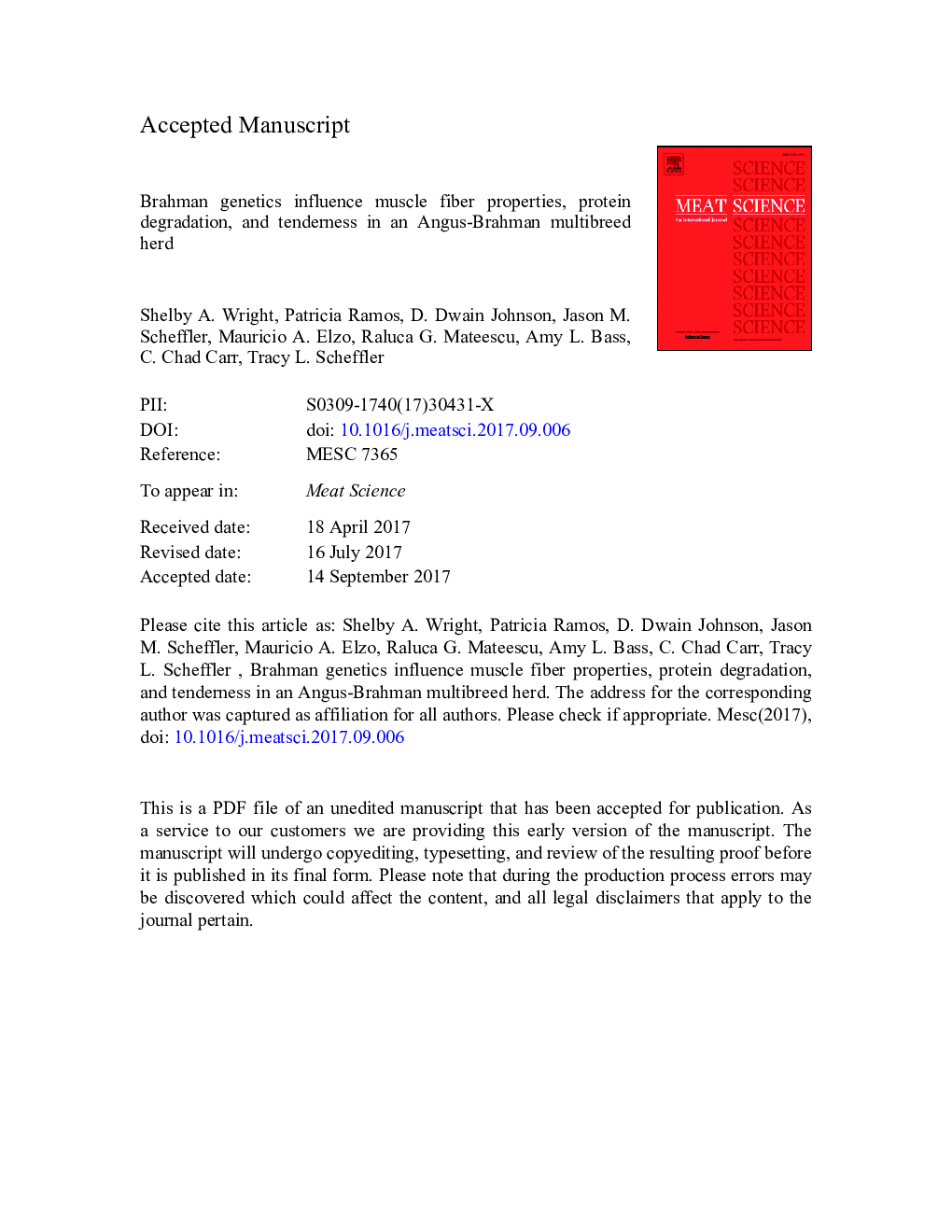| Article ID | Journal | Published Year | Pages | File Type |
|---|---|---|---|---|
| 5543187 | Meat Science | 2018 | 43 Pages |
Abstract
The objective of this study was to determine the influence of Brahman genetics on muscle contractile and metabolic phenotype and postmortem proteolysis. Cattle used in this study represent a continuous spectrum of Angus-Brahman genetic variation. Steers were harvested and Longissimus samples were collected at 1.5Â h, 24Â h, and 14Â d postmortem. Proteolysis during the 14d aging period was evaluated, along with Warner-Bratzler shear force (WBSF) and trained sensory panel tenderness. Myosin heavy chain composition and enzymatic activity were used to evaluate fiber type characteristics. As Brahman influence increased, WBSF increased and sensory tenderness decreased. Calpain-1 autolysis decreased as Brahman percentage increased, and corresponded with reduced degradation of troponin-T, desmin, and titin. Increasing Brahman percentage was associated with greater citrate synthase activity and greater cross-sectional area of type IIx fibers. Brahman-influenced cattle produced tougher steaks and exhibited decreased protein degradation. Thus, Brahman genetics impacted not only the calpain-calpastatin system, but also muscle fiber size and metabolic properties.
Related Topics
Life Sciences
Agricultural and Biological Sciences
Food Science
Authors
Shelby A. Wright, Patricia Ramos, D. Dwain Johnson, Jason M. Scheffler, Mauricio A. Elzo, Raluca G. Mateescu, Amy L. Bass, C. Chad Carr, Tracy L. Scheffler,
